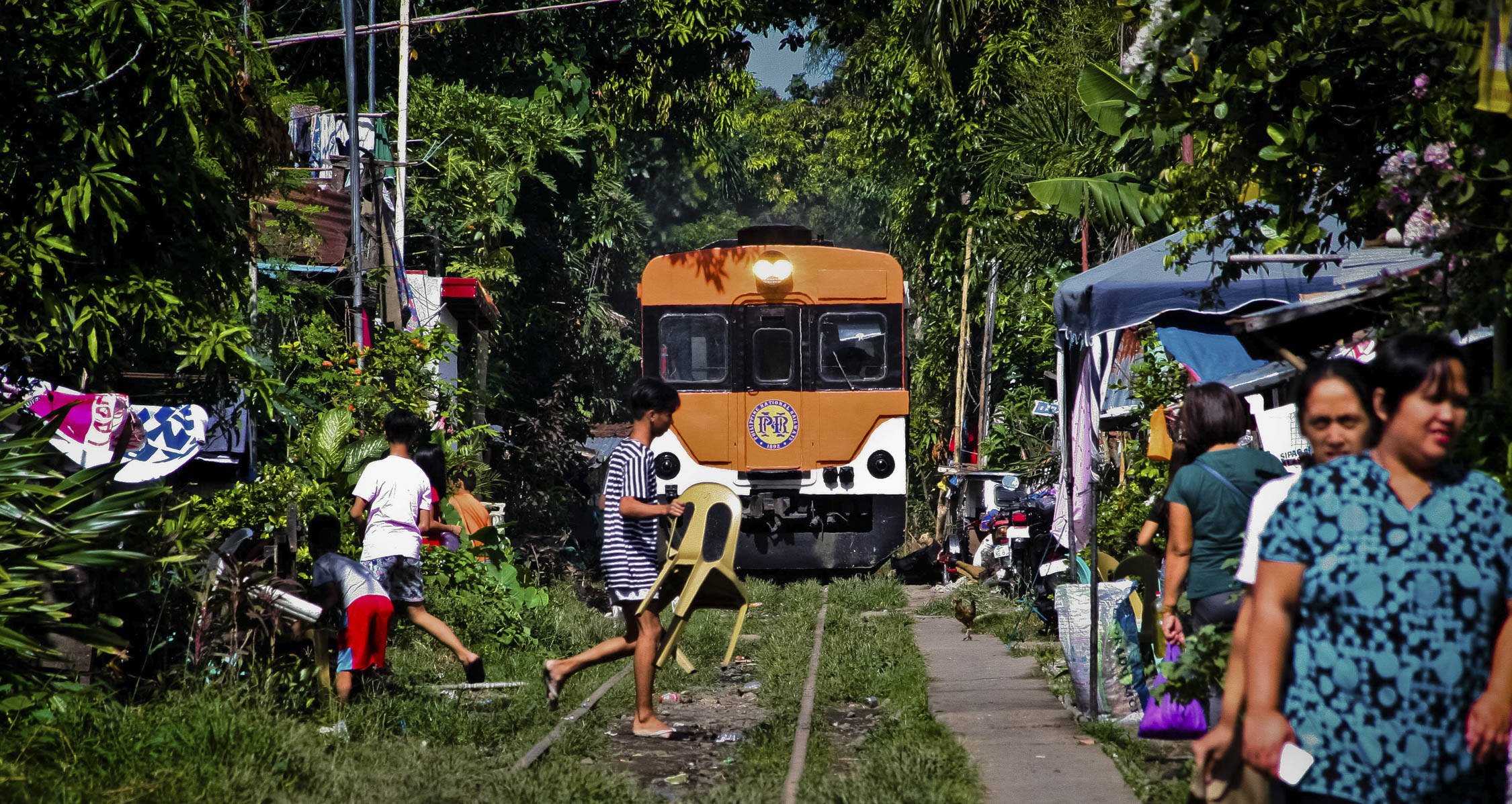Horror train stories: Stoning, crashes

RAILROAD CROSSING In this photo taken before Christmas, residents living along the railroad at Barangay San Antonio in Los Baños, Laguna, go about their day unmindful of a passing train. The Philippine National Railways resumed its regular trips from Metro Manila to Laguna this month. —CHRIS QUINTANA/CONTRIBUTOR
SAN PEDRO CITY—The Philippine National Railways (PNR) has appealed to communities along the railroad from Metro Manila to Laguna province to respect public property and be mindful of commuters’ safety after the agency recorded incidents of stoning and vehicles crashing on trains.
In December alone, the PNR recorded at least 14 incidents of rock-throwing and of people dumping trash or placing debris in the middle of the tracks at various points between the Tutuban station in Manila and the train stop at the International Rice Research Institute (Irri) in Los Baños town, Laguna.
These also included people splashing water onto incoming trains or using slingshots to target the train’s glass windows from a distance.
Crissy Ecalnea, PNR’s senior executive head, said the PNR was lucky there were no incidents yet of residents throwing human waste, one of the classic horror stories that involved Philippine trains.
But a couple of accidents, involving cars or other vehicles that tried to beat the train, have happened since train trips became more regular a few months ago.
Article continues after this advertisement‘Hooligans, misfits’
For a long time that the PNR was out of operation, Ecalnea said people needed to be reminded of train safety protocol, as basic as having to stop at a railroad crossing.
Article continues after this advertisementShe said they were hesitant at first to go public in fear that such incidents of stoning might only encourage more vandals, but realized they needed people’s support to keep the trains running.
All the PNR and the Department of Transportation (DOTr) could do for now was to appeal to the public to stop the “misdeeds,” which they said were both “disturbing” and “disruptive” of train operations.
“We are now closely coordinating with the proper law enforcement authorities to immediately investigate and hold responsible these hooligans and misfits,” Transportation Assistant Secretary Goddes Hope Libiran, the official overseeing the DOTr’s communications and commuter affairs, said in a statement.
Ecalnea said the viral photos that showed the train’s glass windows broken were of the old Kogane train, donated by Japan, and which runs up to the railway’s final stop at Irri in Laguna.
The brand new trains, which the government purchased from the state-owned Indonesian company, PT Industri Kereta Api (PT Inka), were not damaged as its glass windows were covered with another layer of protection, she said.
“I would also like to clarify that the trains were not broken but were perfectly working,” Ecalnea said.
The PNR started its inaugural run for the six new trains on Dec. 16.
Biggest challenges
“As the one who allotted the budget for the purchase of these new train sets, of course my heart bleeds hearing this news,” said former Sen. JV Ejercito, who served as vice chair of the Senate committee on finance. The committee approved the allotment of P3.5 billion for the purchase of the new trains.
In an online interview on Saturday, Ejercito said “security and order” seemed to be the PNR’s “greatest challenges” in reviving the century-old mass transit eyed as a solution to traffic congestion in Metro Manila.
“There are residents along the railway tracks that view [the train operations] as a threat to their eventual eviction or as danger to their lives when it should be the other way around,” he said.
“Priority should be given to those who reside beside or near the railroad tracks as the PNR and the DOTr embark on the modernization and rehabilitation of the PNR north and south lines,” he added.
Ecalnea said while they had been conducting weekly clearing operations, “thousands” of informal settlers remained or “have kept coming back” inside the tracks’ 7-meter danger zone.
She said people and local governments should not feel “displaced [by the train] as they should have not [settled] there in the first place.”